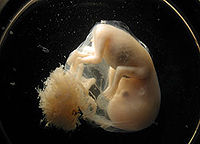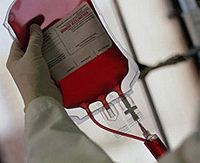Get information about how likely for you to give birth to the son of a patient hemophilia is easy. The difficulty is to decide what to do with this information
Content
Family planning
 Get information about how likely for you to give birth to the son of a patient hemophilia is easy. The difficulty is to decide what to do with this information, as it affects many family relationships. Spouses will need help and support from specialists from the center of hemophilia, other members of their family, local doctors and servants of the Church to make a decision that they choose.
Get information about how likely for you to give birth to the son of a patient hemophilia is easy. The difficulty is to decide what to do with this information, as it affects many family relationships. Spouses will need help and support from specialists from the center of hemophilia, other members of their family, local doctors and servants of the Church to make a decision that they choose.
Men suffering from hemophilia, and women who are hemophilia carriers can make a decision to avoid transmission of an abnormal gene to their children. The solution in these families must be taken to spouses together, and it will depend on much, including knowledge and understanding of pain, which is related to the disease, as well as on the presence of conditions for help with hemophilia in a particular region.
For a family in which hemophilia is revealed and or to choose a poorest in the following:
- Do not have your children and adopt strangers.
- Carry out appropriate analyzes during pregnancy, and if the fruit is male, then interrupt the pregnancy, if this is allowed to be local law.
- Take the birth of hemophilia bearer's daughter or risk in 25% of 100 sick hemophilia son if the mother knows that it is a carrier of the disease.
- Select preimplant diagnostics when the genetic structure of DNA connected in vitro egg and spermatozoa is investigated for the presence of an abnormal gene.
How to recognize hemophilia during pregnancy
 There are several research procedures that can be carried out during pregnancy.
There are several research procedures that can be carried out during pregnancy.
Analysis of placental chorion porce
From the placenta take on the analysis of fabric containing fetal cells in the early stages of pregnancy. During the analysis, the floor is determined and the presence of hemophilia gene. Analysis is possible in 70% of cases. In the early detection of the disease of hemophilia, the fruit for spouses becomes more acceptable at this stage to make a decision and interrupt pregnancy. The risk of spontaneous interruption of pregnancy due to this procedure is 1%. In very rare cases, injury is applied.
Other procedures give less meaningful information and are held at later stages of pregnancy.
Puncture of the fetal bubble (amniocentesis)
During this procedure, at the 15th week of pregnancy, a woman, which, according to preliminary data, is a carrier, a certain amount of fluid is assembled around the fetus in the uterus. Fluid cells are used to determine the field of the fetus. There is 1% risk to cause a spontaneous abortion to this procedure. If the fruit is a male, then there is a choice – Stop pregnancy and avoid 50% risk of having a babe of patient hemophilia. This diagnostic method may be useful in some cases and only when it is known that an abnormal gene has already been revealed in the woman's family.
Fetoscope Blood Study With Fethoscope
This analysis can be carried out only in specialized centers. It is performed on the 18-22 week of pregnancy. If during the procedure it is possible to take the desired amount of blood of the fetus, then it can be quite reliably determined by the level of factors VII or IX. The risk of spontaneous abortion is in this case 3%.









